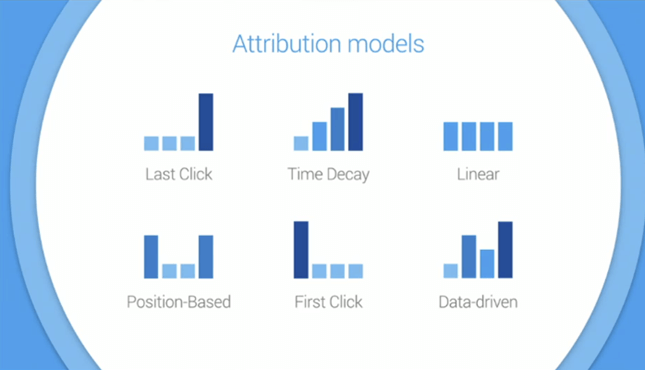How did you search this year? View the trending list for 2017.
Bryan Coe: Digital Marketing, SEO, Analytics, Soccer, Tech & German
By Bryan Coe
How did you search this year? View the trending list for 2017.
By Bryan Coe
“First click attribution is akin to giving my first girlfriend 100% of the credit for me marrying my wife.” ~A. Kaushik

Many analytics reporting platforms use First touch as their default for conversion attribution. Like the above quote says, this is not the best way to give attribution. Just ask your wife, or husband!
Ok, but first what does that mean? Time to geek out a bit… First touch attribution means that the way a visitor arrives to your site for the very first time is credited with the conversion.
When someone searches for candied yams, you sell candied yams and they click on your listing in the search result which brings them to your site. That is the interaction that gets the credit for the sale. In some ways this might make sense. It means the effort that you put into getting found in search is what paid for the sale. The challenge is though. They may have first come through search, but then a referral, then through search again, then direct, and another referral. Then after all that they finally converted.
![]()
So was that conversion really created only by the initial touch through organic search? Or was it the last touch that finally made them convert. Or some would argue that it was the whole series of touch points that made the sale.
Well, if you’re running a paid search campaign and look at standard First Touch Attribution, you might see that there are very few conversions for paid search. How do you then explain to your boss/client that paid search is benefiting the company? With only first touch conversion attribution, you’re probably going to lose your budget pretty quickly.
In the two examples below you see paid search is buried in the middle of the conversion path. The Organic Search team is getting all the credit when really these conversions were assisted by other channels. Without looking deeper you wouldn’t know this.

Although the major analytics platforms have a default setting they also have ways to build custom attribution models. For example Google Analyics has a few alternatives built in to its free platform.
Deciding on the best model for your site might depend on the channels you are using as well as your overall marketing strategy. But without at least exploring the options you are hampering your ability to truly understand your visitors.
Have questions? Post in the comments.
By Bryan Coe
As SEOs we often look at a lot of website pages. It can sometimes be monotonous to write meta-descriptions, titles, H1 copy and other SEO bits that go into a site. But it’s always a good idea to have an editor (or at least a second set of eyes) no matter how little or if it seems like something trivial that is behind the scenes.
After all, you don’t want people to miss your best iffer!
Sometimes things slip through.. even for big national companies!

By Bryan Coe
In this world of all things digital if you can’t measure it you probably shouldn’t do it. In the marketing world of yesteryear TV, Radio, billboard advertisers sold ads on hunches, beliefs and maybe correlation at best.
We believe 1,000 people drive by here every day.
According to our survey (based on a small sample of the population) this show has 5 million viewers.
According to a national survey (based on a small sample of the population) our station has 20,000 listeners on Thursday afternoons.

Does that sound like real measurement? No!
Traditional media continues to panic because they can’t really tell you how many people will actually see/hear/read your message.
Don’t waste your time with these outlets unless they can give you a clear measurement of the value.
Digital advertising provides you with a much better way to track your ROI. You can see how many people saw your ads and who took action and converted.
If you are going to use traditional channels then make sure you invest in an analytics platform like Google Analytics or Adobe Analytics. Both platforms continue to improve their offline tracking abilities. The beauty of it is you can then view your on and off-line efforts all in one place. Then slice and dice the data to see how your marketing efforts are working.
By Bryan Coe

As analytics experts, this is the question we have to ask ourselves every time we work on reporting. With today’s tools we can track just about anything you can think of, but the real question is
SO WHAT?
You have to ask yourself, “Why is this important? How does this help us better understand our customers? Does this data really help us with actionable insights?”
If you can’t answer yes to at least one of these questions, or justify why the data is relevant in some way, then don’t add that table to your report or add another slide to your presentation deck.
Clear actionable data is much more powerful than puking data just because you can.